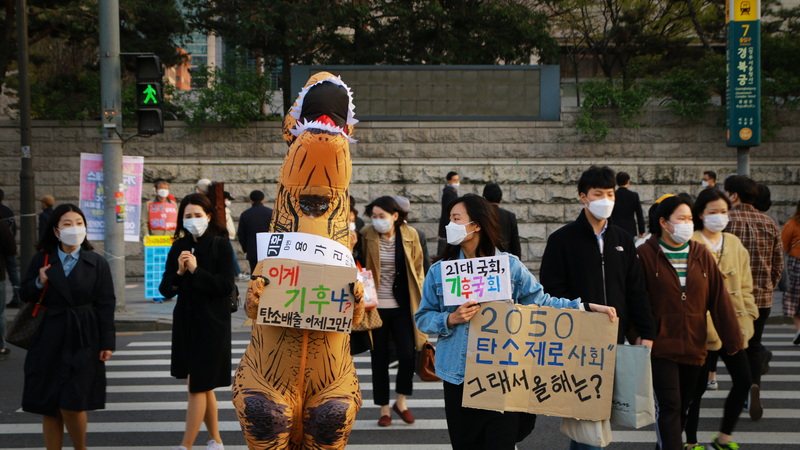Be the Change You Want to See in the World: An Interview with Lee Na-gyeong
Recent flooding in Korea fills the news and media these days. Although this was due to the monsoon season, I have never seen such huge floods since arriving in Korea fifteen years ago. I also saw fewer cars then, and summers were not as unbearably hot as they have recently been. It is obvious that climate change has begun to show its impact directly. Yet I have seen some hope that there is some change going on; I have seen more businesses trying to shift their products to be more eco-friendly, and in almost all of the places where I’ve seen the change, it has been initiated by young people. It is true that many young people are taking more active roles to combat the climate crisis in Korea. One such example is the Youth Climate Emergency Action group. It is a rather new group consisting of young people in their 20s. On their website, they describe themselves as “a non-violent, direct-action group on the climate crisis.” These young people are not climate experts, but rather ordinary people like you and me with one ultimate goal: to realize climate justice for all countries, regions, classes, generations, genders, and species. They demand drastic reductions in greenhouse gases and other transformations from countries and big companies.
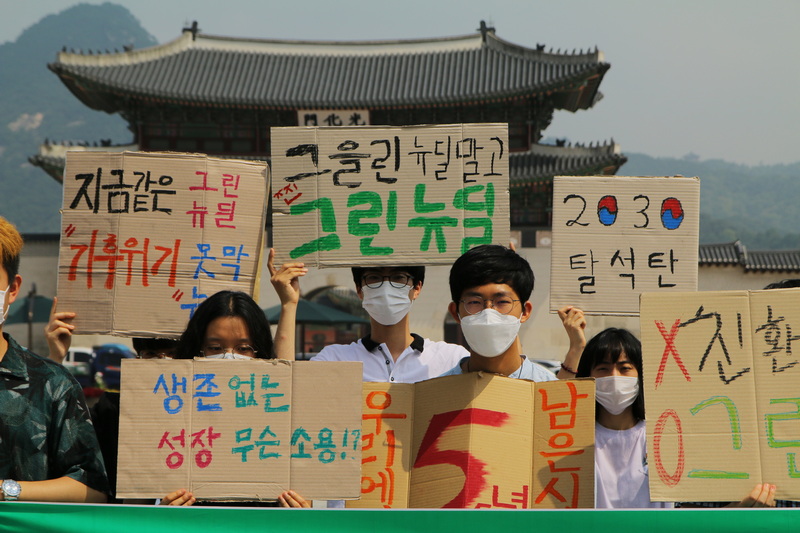
Another unique point of this group is their ever-present dinosaur mascot, whom they have named Kim Gong-ryong (“gong-ryong” means “dinosaur” in Korean). The mascot, representing a species that has become extinct due to climate change, is present every time they go out on the streets, giving them more impact in arousing the curiosity of passersby. With around 30 members, they are a rather small group, but even so, they know that a small thing can go a long way. We met Lee Na-gyeong, one of the members and activists, who will be present at the 12th World Human Rights Cities Forum, to learn more about the group. Below is our interview.
Gwangju News (GN): Thank you for agreeing to be part of this interview! Your group’s full name, “Youth Climate Emergency Action – Kim Gong-ryong and Friends,” is quite peculiar. Could you let us know the reason why you chose the name and what your group’s goals and mission are?
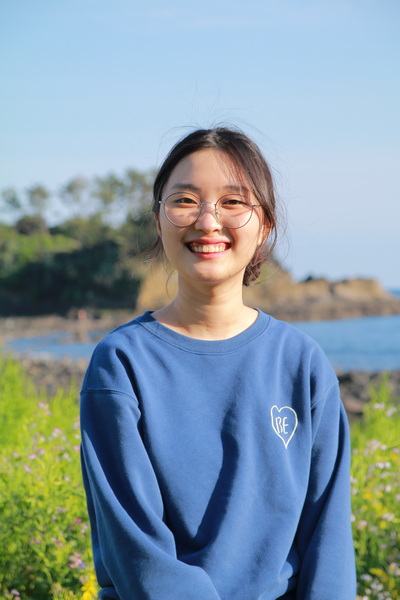
Lee Na-gyeong: Our group’s official name is “Youth Climate Emergency Action”; “Kim Gongryong and Friends” is a nickname. Youth Climate Emergency Action began in early 2020 when young people who shared the urgency of the climate crisis gathered together. The climate crisis cannot be dealt with slowly and leisurely. So, based on the consensus and goal of “Let’s act urgently,” we came up with the name Youth Climate Emergency Action.
The other name, “Kim Gong-ryong and Friends,” is intended to arouse curiosity. It is a name that conveys a political message and our identity in a fun way. It contains the message, “If this continues, we will become extinct just like the dinosaurs!” We know the causes of endangered species: It is because of the capitalist system that exploits nature and pursues growth without considering the limitations of the earth. The meaning of “friends” was to convey that various young people are working together to ease the climate crisis.
Our goal is to achieve climate justice and make responding to the climate crisis a top priority for our society. In the face of climate disasters that have become a daily routine, it is necessary to imagine that a different world is possible. We want to create a better society that saves lives and saves the earth, not a system that causes a climate crisis. The reality is that we keep getting worn out and weary and turn away from the problem. Facing the climate crisis, informing people, and working together on a climate movement are also major goals.
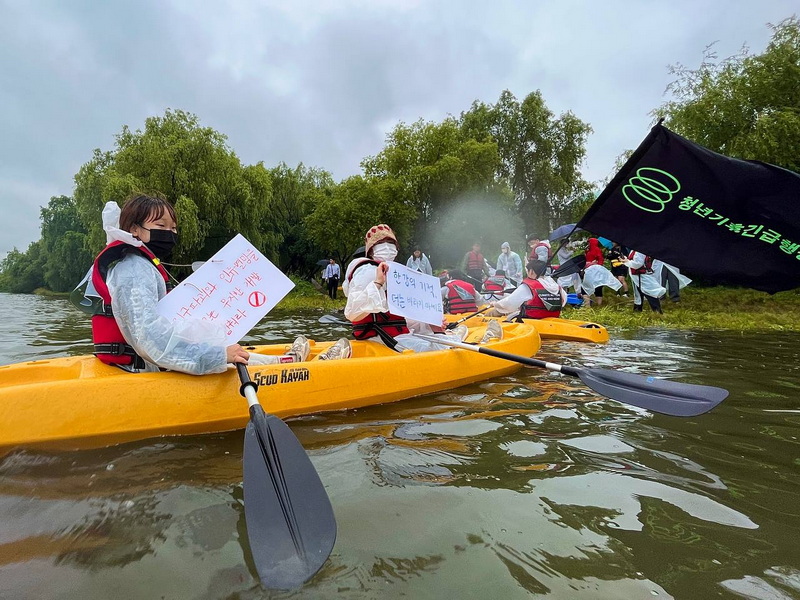
GN: Being comprised of passionate young people in their 20s and 30s, your group seems to be full of ideas and strong on action. We are curious about what specific activities you are doing and what tangible achievements they have produced.
Lee Na-gyeong: “Let’s create climate politics” was one slogan we supported during the election season. In order to convey a message of “Let’s vote on the promise to save the planet,” and to approach citizens in a friendly way, “Climate No. 0, Kim Gong-ryong” ran for office. We also made our own pledges, hoping that the climate movement would reach people intuitively. The climate crisis is an urgent issue, but it is of no use if citizens do not see us and listen.
Youth Climate Emergency Action is a non-violent, direct-action group. We meet citizens on the street, but we also take direct action in front of politicians and businesses to convey our needs. I met in person with the Minister of the Environment and the directors of KEPCO and delivered a letter telling them to stop investing in overseas coal. When the National Assembly pushed for the Gadeok-do (Gadeok Island) New Airport Special Act, I went to Busan and protested in front of Democratic Party lawmakers. In order to prevent the export of coal-fueled power plants overseas, I protested in front of the Dusan office building, shouting, “Stop greenwashing, stop exporting coal power plants while saying they are eco-friendly.”

The climate disobedience trial revealed that the current legal system is protecting corporate profits rather than dealing with the climate crisis. I think it was an opportunity for many people to be angry at the greenwashing undertaken by large corporations and to learn about the problems of the judicial system. We need ecological laws to protect public life and the earth, not laws that favor the vested interests of a few.
Another achievement of our group is the subjectivity of youth. Even at our regular meetings, there are many cases where members of the younger generation are usually portrayed as pitiful beings who have to be protected, shielded behind folding screens. The reality, however, is that the youth are given only false promises and not decision-making rights. The achievement of Youth Climate Emergency Action is that rather than just being quiet, we have stepped up to become an uncomfortable and troublesome presence in front of vested interests.
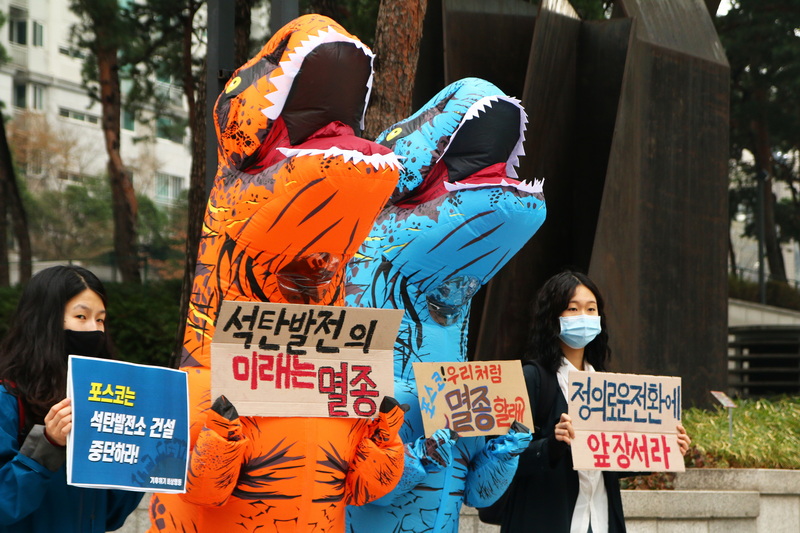
GN: Many people are aware of the seriousness of the climate crisis due to extreme climate changes that have recently become even more serious, and moreover, they are increasingly paying attention to the various human rights issues caused by the climate crisis. In particular, what are the human rights issues that future generations will face, and what are the implications of youth climate action in this regard?
Lee Na-gyeong: The seriousness of the climate crisis seems to have become universally recognized now. As a result, there are many practices that are being carried out in consideration of the earth and the environment. There are many young people who try to reduce their carbon footprint by buying upcycled products, going vegetarian, not buying new clothes, and throwing out less trash. It does reduce carbon emissions. However, hundreds of millions of tons of greenhouse gasses are emitted by one coal-fueled power plant alone. There are more than 50 coal power plants in Korea, and now Korean companies are building new coal power plants in Vietnam and Indonesia. So, can you imagine the harmful results? No matter how hard I try personally, the system that relies on fossil fuels and destroys the livelihoods of local people does not change. As citizens are concerned about the climate crisis, it is natural that the government should radically regulate carbon emissions. The climate action of young people demanding coal power plants be shut down and a switch to renewable energy comes naturally.
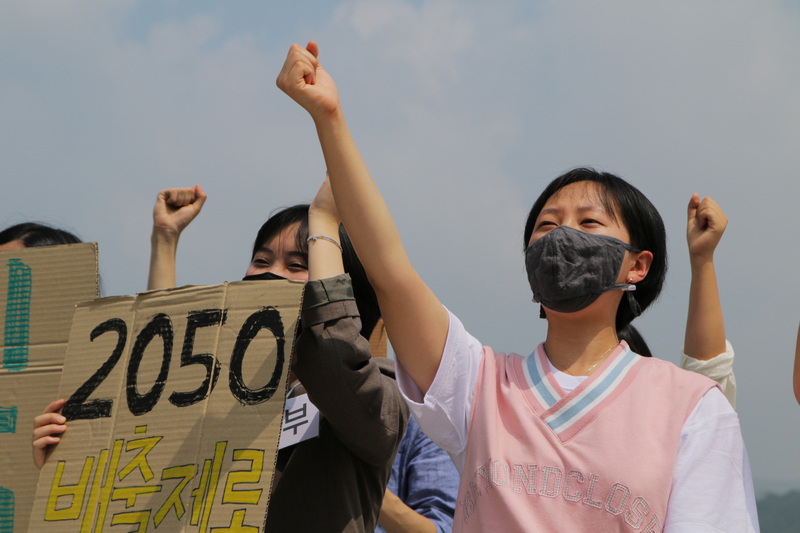
Actually, the dreams of young people who are involved in the climate movement are often simple: I want to live happily; I want to become a grandmother safely. But in the face of the climate crisis, all that is impossible. Even if I work very diligently, I will not be able to achieve such a dream if Korea is flooded and drought comes in 2050.
The climate crisis that takes away the right to dream of the future and even the right to live in a safe home is a human rights crisis. In order to make a society where human rights are guaranteed and one can live safely and peacefully, society itself needs to change, and there is no other way to do this than to take climate action. There are many young activists who say that their “climate depression” has been alleviated by taking part in the climate-change movement. Thoughts about the climate crisis that used to seem so daunting when I was alone can now be alleviated by associating with likeminded colleagues: We meet and speak out together, which gives me strength to live through the climate crisis.
GN: The 12th World Human Rights Cities Forum will be held on October 10–13 under the theme of “Climate Crisis and Human Rights.” You will be attending the Forum’s roundtable session on behalf of young Korean climate activists, so could you share with our readers briefly what you plan to focus on during your presentation?
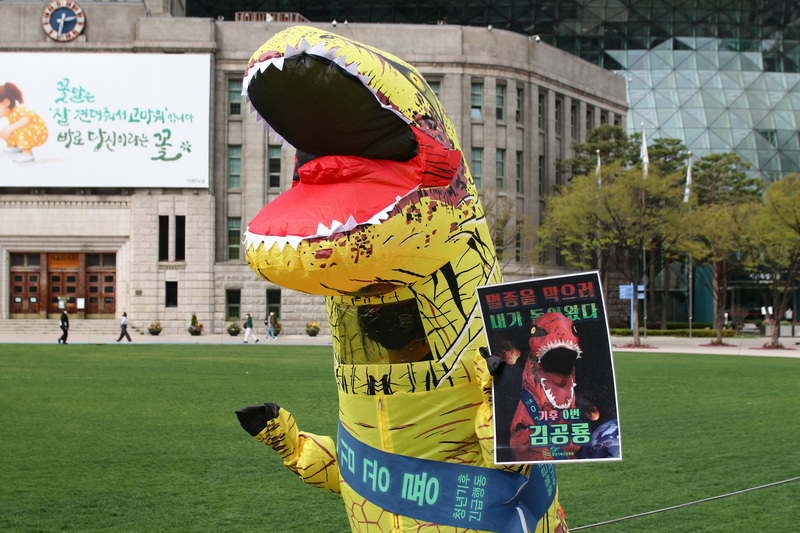
Lee Na-gyeong: Now, it is necessary to specifically present what damage has been done and to whom, as well as what needs to be done to make changes. Whenever a climate disaster strikes, the absence of public systems that our society has neglected is exposed. There are those who benefit and those who suffer from the unequal capitalist system that has caused the climate crisis, but it is easy to predict who is less affected in the face of climate disaster.
There is a common perception that in order to respond to the climate crisis and live eco-friendly lives, we have to give up the happiness that we enjoy, and that the quality of life will decrease in the future. However, protecting the quality of human life as well as the world’s ecosystems is most definitely not a zero-sum game for the future; rather, they should coexist. Looking at the fact that an unequal society is also one of the causes of the climate crisis, we can see that a more egalitarian society and climate-crisis resolution go hand in hand.
The structure that caused the climate crisis is the same as the structure that prevents the guarantee of equal human rights. A system that pursues endless economic growth destroys nature, just as it exploits humans for profit. Eventually, it goes beyond the limitations of the earth and causes the collapse of the ecosystem. Without talking about this structure, we also cannot talk about an alternative. Therefore, the climate crisis cannot be viewed as a change in the natural environment unrelated to humans, and it cannot only be looked at as the extent to which nature must be protected and preserved. Considering the climate crisis as a human rights issue, I think we can say a lot about what we can do as citizens, what changes are needed in politics, and what role the state should play.
GN: To conclude this interview, do you have any final message to our readers?
Lee Na-gyeong: When thinking of the climate crisis, there will be many people who will fall into despair. Some say that we have 10 years left before the average global temperature rises by 1.5 degrees. So, will we all die in 2030? No. Even after that, life will go on. However, we desperately need social and environmental safety nets to protect us from typhoons, heat waves, and wildfires. There is a saying that “the climate will deteriorate, but society will not collapse.” As I said before, I think it is really important to believe that a different world is possible and that citizens can make that change. I hope that through the World Human Rights Cities Forum, we can imagine and make a different world a reality. Thank you.
GN: Thank you for your time, and we wish you the best of luck in your future endeavors!
To join the group as a member or make a regular or one-time donation to support their projects, visit https://ycea.kr/ or contact climate.kimgongryong@gmail.com. Instagram: @climate.kimgongryong
Interviewed by the World Human Rights Cities Forum Secretariat.
Introduction and translation by Karina Prananto.
Photographs courtesy of the Youth Climate Emergency Action.





